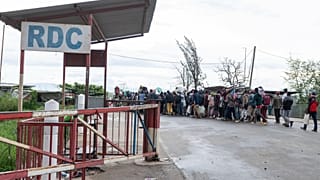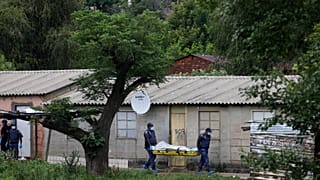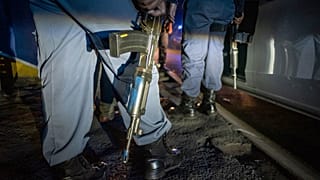South Africa
Speaking at the recent general assembly of the International Astronomical Union (IAU) in Cape Town, Sian Proctor said the next generation is ready to play a key role in the future of humanity in space.
Geoscientist and astronaut Sian Proctor was, in 2021, part of the first all-amateur crew to circle the world without a professional astronaut.
The billionaire who paid undisclosed millions for the trip and his three guests wanted to show that ordinary people could blast into orbit by themselves.
SpaceX founder Elon Musk took them on as the company’s first rocket-riding tourists.
Surpassing the International Space Station by 100 miles (160 kilometers), the passengers savored views of Earth through a big bubble-shaped window added to the top of the capsule.
NASA says during the three-day flight, Proctor, a community college educator, scientist and artist from Tempe, Arizona, became the first African American woman to pilot a spacecraft and the first African American commercial astronaut.
Proctor spoke recently at the general assembly of the International Astronomical Union (IAU) in Cape Town, South Africa.
It was first time the largest gathering of international astronomers and space enthusiasts had been held on the African continent.
“The importance of an event like this is to inspire, engage, and eventually help people find career paths," says 54-year-old Proctor.
"When you can host an event as big as this, and as important as this, it means that you're capturing and bringing the best of the best here to South Africa.
"And then, what that does is it helps inspire the community and the school kids and everyone who is paying attention.
“I think that the next generation is ready to come and really play a key role in the future of humanity in space, technology in space, all of that. And a conference like this is what kicks that off.”
More than 2,000 delegates from 82 countries made the trip to share and discuss research in almost every field related to space.
The meeting also featured a ten-minute live radio link-up with the International Space Station, giving South African schoolchildren the chance to ask a crew member questions.
A team from NASA also attended the meeting.
Among the exhibits, visitors could learn about the Square Kilometre Array Observatory (SKAO), which aims to build the two largest radio telescope arrays in the world, located in Australia and South Africa.
With SKAO, astronomers hope to look back into the history of the Universe as far as the "Cosmic Dawn", when the very first stars and galaxies formed.
“The SKAO will be South Africa's biggest radio astronomy project to date," explains radio spectrum scientist Harry Qiu.
"It will be in collaboration with over ten countries all over the world, and it's bringing new jobs to the Karoo and developing more technologies for South Africa and other membership countries as well.”
The IAU has more than 12,000 individual members and is the leading astronomy organization. It was founded 105 years ago in Belgium.
"People have got different ideas, people have different ways of thinking," says Charles Takalana, a member of the IAU organizing committee.
"They come here, and they share it with one another, and it could result in some new science as well, in some new discoveries and a better understanding of the overall universe.”
The International Astronomical Union (IAU) general assembly ran 6-15 August.











01:37
South Africa's refurbished Digital Dome set to open in February 2025
02:00
Latest SpaceX flight is Falcon 9 31st mission
01:00
Screens in Times Square display the first images from the James Webb Space Telescope
01:00
In the Israeli desert, astronauts simulate "life on Mars"
00:57
Nora al-Matrooshi, the first Arab woman training to be an astronaut
Go to video
China says most rocket debris burned up during re-entry